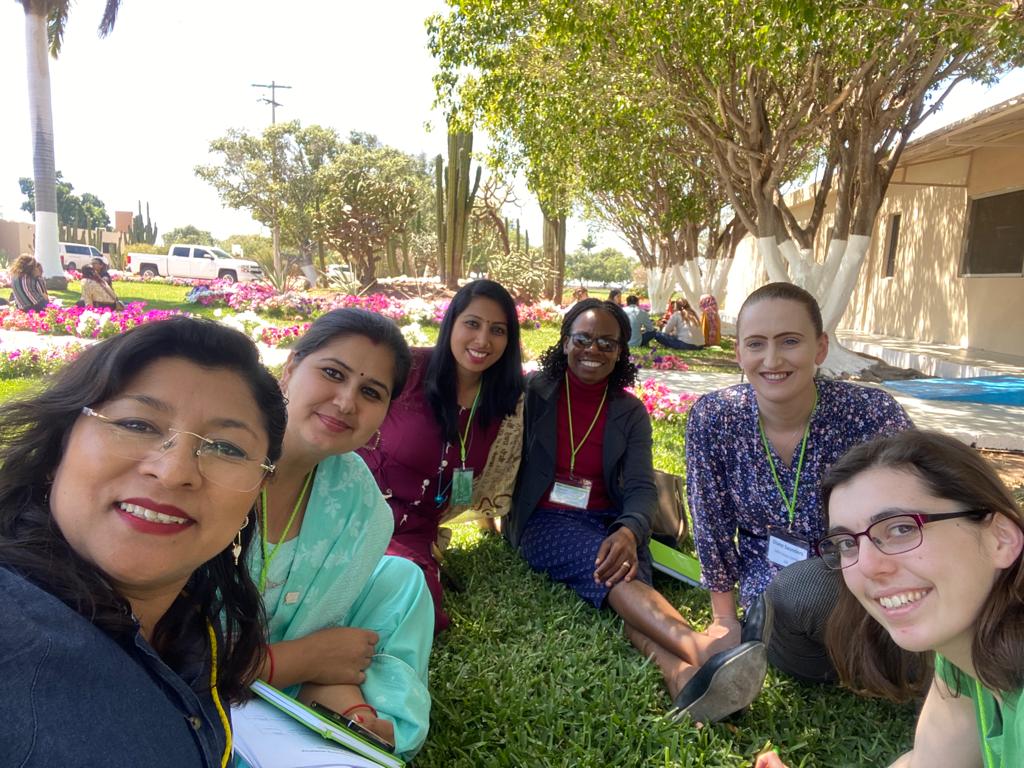Araceli Torres
Background
I met Araceli 15 years ago when I was a PhD student at CIMMYT (the Maize and Wheat Improvement Center in Mexico), doing field research at the station in Ciudad Obregón, Sonora. Araceli was working in the wheat physiology team that was operating out of the building across the walkway. We used to run into each other frequently and Araceli impressed me with her energy and wisdom, both very useful and inspiring to me as a student and later a young researcher at CIMMYT. Araceli very efficiently runs a large operation and is also a resourceful person that many turn to for advice.

Since 2022, Araceli is organizing the Women in Crop Science chapter in Cuidad Obregón and leading it together with many other women. I think it is the most active chapter we have so far. They are working across the three institutions that are housed at the same campus (in addition to CIMMYT, there is the national research organization, Inifap, and the local farmer organization that supports research, PIEAES). They have hosted two coffee mornings and two events about women’s rights that also attracted a lot of participation of men that want to be allies. In this interview, we get to learn a bit more about Araceli’s background, career and aspirations.
Briefly describe what you do?
As a research assistant in the wheat physiology team in the International Maize and Wheat Improvement Center (CIMMYT) in Mexico, I have a wide variety of activities. I lead the field and lab team at the experimental station in Obregón, Sonora, and support the development of the planting plan for the Obregón, Batán and Mexicali stations. I collect phenotyping data; support in the structuring and analysis of our databases, as well as selecting lines based on physiological characteristics which will be included in new projects or in the pre-breeding crossing blocks.
Why did you get into research and especially Crop Science?
Because it connects me with my roots, I am the daughter of smallholder farmers, my childhood was spent in the fields and among the crops. I learned that despite the difficulties of production in rainfed conditions like in the region I come from in Tlaxcala in central Mexico, it is satisfying and fascinating to produce food. This led me to continue in this line of work, but looking at it from a scientific point of view and using the means that crop science offers us. It really motivates me to know that we contribute to the generation of new materials that will improve the conditions of producers from different parts of the world. I think that our work could be summed up in the phrase “High impact science for the continuous improvement of wheat lines for the world”.
Rapid Fire Questions
Lab or field?
Field
Conference or stakeholder meeting?
Stakeholder meeting
Literature review or project report?
Project report
Conventional or molecular methods?
Conventional
Hybrid, inbred or vegetative?
Vegetative
Qualitive or quantitative research?
Quantitative research
GenStat or R?
R
Favorite crop & why?
Wheat because it is a very adaptable crop, diverse and of great importance in feeding the world.
What do you love the most about your job?
Being in contact with plants and transcending through them, since they are a means to helping others.
What is your dream to achieve in your field of expertise?
Develop a research project proposal that includes collaboration with other centers working on crop science, doing the research and publishing the results in scientific articles, since this integrates growth in various areas of my professional life (statistics, English language, research proposal writing, etc.).
Who has influenced you the most and why?
Dr. Matthew Reynolds for his great career in science; I admire his vision to create the wheat physiology program, as well as being a brilliant scientist who has trained several generations. He gave me the opportunity to be the first female engineer to lead the physiology team at the station in Obregón Sonora station, which was and has been an important challenge. With his help and that of my colleagues we have grown as a program, creating opportunities for several other colleagues.
More recently, I had the opportunity to participate in the ‘Career development training & networking workshop” in CIMMYT, Obregón, Mexico, where Dr. Diane Saunders from the John Innes Centre was one of the course leaders. She impressed me with her ability to convey ideas, mastery of the subject and way of interacting with the team. She inspired me to learn more about her career path in the world of crop science. I would like to learn more from and about her, to get inspired and motivate me further.
What is your favorite aspect of your research?
Knowing that my work and that of my colleagues and the team is reflected in a greater good and that thanks to this and collaborative work we can have a positive impact on society. Science with purpose and social impact.
What would make your research and crop science experience even better?
Participate more actively in spaces that promote my professional development such as courses and workshops, seek mentoring and interact more with other scientists and colleagues who are growing as well in this fascinating world.
Beach or mountain?
Mountain
Tea or coffee?
Tea
Appetizer or dessert?
Dessert
Instagram or Twitter?
Fame or fortune?
Fortune
